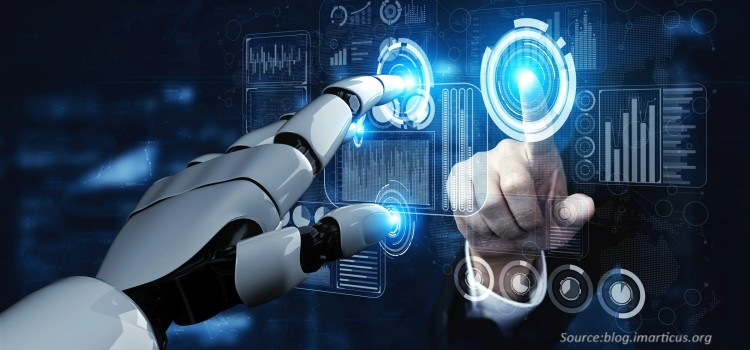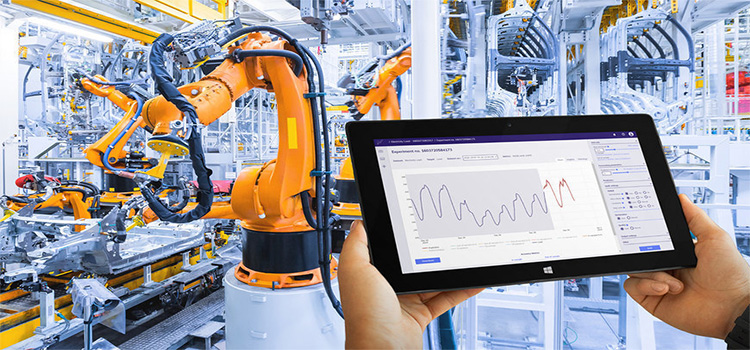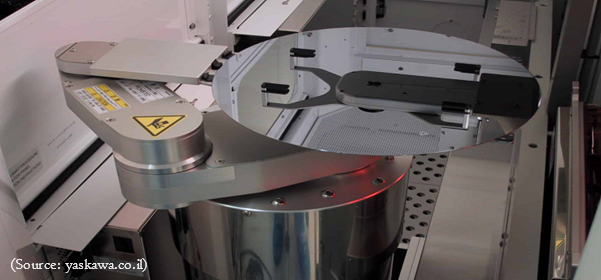Revolutionizing Workforces: Collaborative Robots and the Innovation Odyssey
17-Sep-2024

Introduction
In the ever-evolving landscape of industry, technological advancements play a pivotal role in shaping the future. Among the innovations that have surfaced in recent years, collaborative robots, or cobots, have emerged as transformative agents for various sectors. Their ability to work alongside humans efficiently, safely, and intelligently has sparked a revolution in industries, propelling enterprises toward the forefront of innovation. This article explores the multifaceted ways in which collaborative robots are revolutionizing industries, boosting growth, and steering enterprises into an era of unprecedented productivity.
1. The Rise of Collaborative Robots in the Industry 5.0:
As industries transition into the era of Industry 5.0, collaborative robots take the center stage. The Industry 5.0 represents a paradigm shift in which smart technologies, including collaborative robots, work in synergy with human intelligence to create a connected and responsive industrial ecosystem. In this era, cobots are not merely tools for automation but integral components of a holistic & interconnected production system. Their ability to share information, collaborate seamlessly, and adapt to real-time changes aligns perfectly with the core principles of the Industry 5.0, paving the way for a new era of industrial evolution.
2. Enhanced Productivity and Efficiency:
Collaborative robots are designed to complement human labor rather than replace them. Their integration into the workforce streamlines routine and repetitive tasks, enabling human workers to concentrate on the more intricate and creative facets of their roles. By automating mundane processes, industries witness a significant increase in overall productivity, efficiency, and output quality. The symbiotic relationship between humans and cobots creates a harmonious working environment where each can leverage their strengths for optimal results.
3. Safety Reinvented:
A key characteristic of collaborative robots is their strong commitment to safety. Traditional industrial robots have been confined to cages, creating a physical barrier between human workers and the machines. In contrast, cobots are equipped with advanced sensors and artificial intelligence that allow them to recognize the presence of humans and adjust their movements accordingly. This minimizes the risk of accidents and fosters a collaborative and secure workspace where humans and robots can work side by side without fear.
4. Flexibility and Adaptability:
The flexibility of collaborative robots is a game-changer for industries facing dynamic production demands. Unlike their rigid counterparts, cobots can be effortlessly programmed and reprogrammed to execute a diverse range of tasks. This adaptability allows enterprises to swiftly respond to market changes, product variations, and shifting customer demands. The capability of cobots to seamlessly transition between different tasks ensures that production lines remain versatile, cost-effective, and future-proof.
5. Cost-Efficiency and Return on Investment (ROI):
While the initial investment in collaborative robots might appear significant, the long-term advantages surpass the associated costs. Cobots contribute to cost-efficiency by reducing errors, enhancing production speed, and minimizing waste. Additionally, their easy integration into existing workflows means that businesses can quickly realize a return on investment. The cost-effectiveness of cobots positions them as strategic assets for enterprises seeking sustainable growth and improved financial performance.
6. Workforce Empowerment and Skill Enhancement:
Contrary to concerns about job displacement, collaborative robots empower the workforce by relieving employees of tedious and physically demanding tasks. This not only enhances job satisfaction but also provides opportunities for skill development. With cobots handling routine operations, human workers can focus on honing their problem-solving, creativity, and interpersonal skills, thereby contributing to a more skilled and adaptable workforce. The synergy between human intelligence and robotic precision catalyzes innovation within the workforce.
7. Accelerated Research and Development:
Within industries where innovation is a crucial catalyst, collaborative robots play a pivotal role in accelerating research and development processes. Cobots are proficient at handling repetitive tasks associated with experimentation, data analysis, and prototype testing. By automating these aspects, researchers and engineers can allocate more time and resources to the creative elements of their work. This, in turn, will foster a culture of innovation and expedite the time-to-market for new products and solutions.
The Future of Collaborative Robots
As per a recent report published by Next Move Strategy Consulting, the collaborative robot market is predicted to set out a considerable CAGR of 32.6% from 2024 to 2032. Exploring the future of collaborative robots reveals exciting improvements that will make their already impressive features even better than before. Going beyond the cutting-edge technological innovations of today, the collaborative robots of tomorrow are poised to elevate collaboration and productivity to unprecedented levels.
One pivotal transformation on the horizon is the augmentation of interactivity. Effective communication becomes paramount as collaborative robots engage in more intricate tasks alongside the human workforce. Future collaborative robots are engineered to comprehend specific voice commands or respond to nuanced hand gestures, eliminating the need for frequent reprogramming and minimizing downtime during ongoing projects.
As collaborative robots evolve and venture into new applications across diverse industries, they are expected to encounter increasingly unstructured environments. The collaborative robots of the future, armed with a more complex understanding of the tasks at hand, could carry out unrestricted movements to accomplish their objectives. This adaptability would free them from repetitive motions, allowing them to respond dynamically to changing surroundings while efficiently completing assigned tasks.
While certain aspects of this futuristic technology may seem distant, the collaborative robots of tomorrow will undoubtedly demonstrate heightened sophistication and capabilities. These advancements will foster a greater interactivity and collaboration culture, positioning collaborative robots as integral contributors to the ever-evolving industry landscape.
Conclusion:
Collaborative robots have emerged as the cornerstone of the industrial revolution, reshaping the way businesses operate and innovate. The integration of cobots into various sectors not only enhances productivity and efficiency but also transforms workplace dynamics. As industries strive to stay competitive in an ever-changing global landscape, embracing collaborative robots is no longer just an option but a strategic necessity. The symbiotic relationship between humans and cobots propels enterprises toward the forefront of innovation, ensuring a future where technological advancements and human ingenuity coalesce for unparalleled growth and success in the era of the Industry 5.0.
About the Author
 Sunanda Ghosh is a researcher with more than 3 years of experience. She has a passion for understanding consumer behavior and market trends, and uses her skills in innovative ways to gather and analyze data. Throughout her career, she has worked with a diverse range of global clients across various industries including technology, semiconductor, and energy. She is dedicated to providing valuable insights that can help shape a company's direction and drive success.
Sunanda Ghosh is a researcher with more than 3 years of experience. She has a passion for understanding consumer behavior and market trends, and uses her skills in innovative ways to gather and analyze data. Throughout her career, she has worked with a diverse range of global clients across various industries including technology, semiconductor, and energy. She is dedicated to providing valuable insights that can help shape a company's direction and drive success.
The author can be reached at info@nextmsc.com
Add Comment
Related Blogs
Omron, Mobile Industrial Robots, and Locus Robotics Command 23% Of the AMR Industry – Here's how they Achieved it
According to the NMSC analysis, the autonomous mobile robot...
The Future of Care: Exploring Emerging Technologies in Robot Maintenance
Introduction In a rapidly advancing technological landsca...
Find out How Wafer Handling Robots are Transforming the Semiconductor Industry
Introduction In the ever-evolving landscape of semiconduc...










